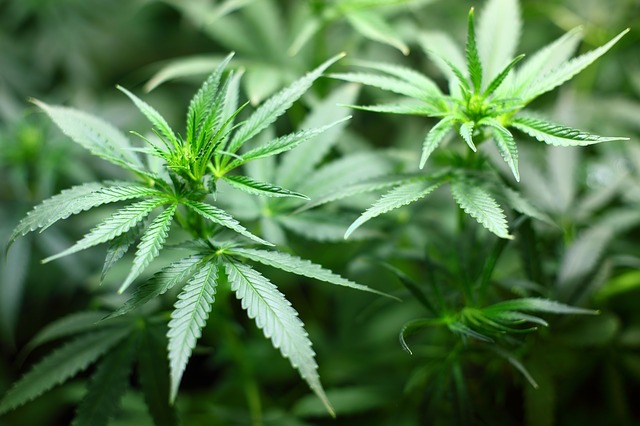
Marijuana safety is a controversial topic in medical offices. Patients who ask for a cannabis prescription for their condition can encounter roadblocks. After having conversations with my patients about medical cannabis this is a review. The following is a simplified overview of marijuana safety and treatment.
Marijuana History
Marijuana has a complicated history because politics influence its usage and acceptance. At the beginning of the 20th century, cannabis was used freely in the United States for medicinal purposes. It was not legally identified problematic under the Harrison Act of 1917. This law provided legal guidance at the time.
Over time, however, negative messaging began to surface that used propaganda to limit the use of the drug. United States anti-cannabis organizations used the widely-spread fear of immigrants to create negative associations between this community and the use of the drug. These organizations claimed that the drug promoted violence and other crimes against law abiding citizens. The chemical name “cannabis” was popularized as “marijuana” in everyday language. This name change was to associate a negative image of the drug with Tijuana.
The Federal Law
In short, the negative propaganda worked. When the Marihuana Tax Act of 1937 imposed a tax on anyone who, “imports, manufactures, produces, compounds, sells, deals in, dispenses, prescribes, administers, or gives away marihuana.” There was little opposition from the general public. President Nixon (1981-1989) further supported the ban on marijuana usage by forming the Drug Enforcement Agency (DEA). This agency heavily enforced the illegal nature of marijuana and other drugs.
Strict criminal laws were enforced over the decades. Under the Obama administration ( 2008-2016) legal regulations eased. Federal guidelines changed to make marijuana-related consequences less severe. However, since the 2016 election, the Trump administration has reversed the prior Obama mandates. They are assuming strict adherence to Federal marijuana criminalization guidelines. These changes in Federal enforcement have created uncertainty in state laws. This fluctuating Federal legal status limits both physician prescriptions and research on marijuana safety.
Marijuana Dangerous Label
Marijuana is a Category I Controlled Substance by the DEA ( U.S. Drug Diversion Agency). According to the guidelines schedule, category (1) drugs has “no currently accepted medical use and a high potential for abuse.” Some examples of other Schedule 1 drugs are:
– Heroin
– LSD (medically known as lysergic acid diethylamide)
– Marijuana (medically known as cannabis)
– Ecstasy (medically known as 3,4-methylenedioxymethamphetamine)
Research projects with Schedule l drug label have no medical benefit for justification to secure taxpayer research funds. Unbiased research funding is expensive without government support. These financial limitations negatively impact scientists ability to to conduct ongoing research about cannabis short and long-term effects on the body. Despite the lack of research on marijuana safety, there is a growing belief that personal and medicinal usage is harmless. On the contrary — health professionals, researchers and policymakers have limited information about its health effects.
Marijuana Ingredients
The most popularly known chemical in marijuana is THC (medically known as tetrahydrocannabinol), but it is not the only agent in the drug. The chemical properties of the various plants vary greatly. For example, Cannabinol (CBD) does not cause euphoria and generally counters the mood effects of THC. The amount of CBD varies in plant strains. The additional complexities from seed variation, soil, pesticides, and composition add to the growing list of unanswered marijuana safety uncertainties.
Cannabis Safety Questions
- Though most people believe that THC does not impair their ability to drive a motor vehicle,data indicates that THC impairs reaction time and visual-spatial judgment. Moreover, when alcohol is combined with cannabis use, the harmful effects are magnified. (in text citation to source)
- Cannabis consumption by teenagers under 18 years of age has potential permanent, long-term adverse cognitive effects. (in text citation to source)
- Higher THC concentration increases insomnia and anxiety.
- Marijuana use by pregnant mothers lowers the weight of their newborns (in-text citation to source)
- Marijuana use is increasingly associated with the development of schizophrenia and other psychoses.( in text citation to source)
“Shifting public sentiment, conflicting and impeded scientific research, and legislative battles have fueled the debate about what, if any, harms or benefits can be attributed to the use of cannabis or its derivatives.” –National Academic Press 2017 Jan 12
However, there are a handful of marijuana effects that have documented research data. The following have cannabis use have substantial research evidence to support its usage.
- Chronic Pain
- Antiemetic in chemotherapy-induced nausea and vomiting
- Spasticity in multiple sclerosis
Conclusions
There is a lack of cannabis safety research to support the numerous products on the market. Cannabis labeling as a Schedule (1) drug obstructs government funds to support clinical research on its effects. There is no scientifically proven data that endorse cannabis as a first-line treatment for all medical concerns. Because adolescents, pregnant women, and babies are the most vulnerable to permanent long-term negative consequences, these populations should be a research priority.
Please support the efforts to obtain government/state funding for cannabis safety research in the United States. Public service announcements about cannabis use should be required. Health providers need trusted information to have productive conversations with their patients. Health decisions should not be based on personal use testimonials and data supplied by the cannabis industry.
References
The contribution of Cannabis Use to the Variation in the Incidence of Psychotic Disorder Across Europe (EU-GEI): A Multicenter Case-Control Study https://www.thelancet.com/journals/lanpsy/article/PIIS2215-0366(19)30048-3/fulltext
FDA is Committed to Sound, Science-based Policy on CBD/FDA https://www.fda.gov/news-events/fda-voices-perspectives-fda-leadership-and-experts/fda-committed-sound-science-based-policy-cbd
Recommendations for research. Washington (DC): National Academies Press (US); 2017 Jan 12. 4, Therapeutic Effects of Cannabis and Cannabinoids. Available from: https://www.ncbi.nlm.nih.gov/books/NBK425767/
PDQ Integrative, Alternative, and Complementary Therapies Editorial Board. Cannabis and Cannabinoids (PDQ®): Health Professional Version. 2019 Jan 17. https://www.ncbi.nlm.nih.gov/pubmed/26389198
http://www.oprah.com/health_wellness/high-tea-parties-everything-you-need-to-know#ixzz5YfRZ4wyC
